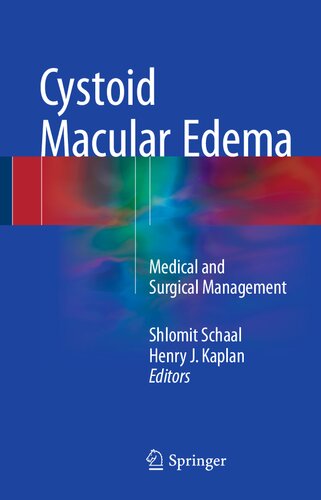

Most ebook files are in PDF format, so you can easily read them using various software such as Foxit Reader or directly on the Google Chrome browser.
Some ebook files are released by publishers in other formats such as .awz, .mobi, .epub, .fb2, etc. You may need to install specific software to read these formats on mobile/PC, such as Calibre.
Please read the tutorial at this link: https://ebookbell.com/faq
We offer FREE conversion to the popular formats you request; however, this may take some time. Therefore, right after payment, please email us, and we will try to provide the service as quickly as possible.
For some exceptional file formats or broken links (if any), please refrain from opening any disputes. Instead, email us first, and we will try to assist within a maximum of 6 hours.
EbookBell Team

5.0
60 reviewsWritten for comprehensive ophthalmologists and vitreoretinal surgeons, this book discusses state-of-the-art medical and surgical management of cystoid macular edema (CME) and explains the current understanding of the pathophysiology of the condition and methods of diagnosis. The management approach is clearly detailed for each potential presentation, including CME occurring in association with uveitis, diabetes mellitus, vitreoretinal interface changes, retinal vascular occlusions, and lens-induced pathology. The guidance takes full account of the continued expansion in medical treatment options due to the development of new drugs and the increased availability of minimally invasive surgical procedures. Additionally, since therapeutic approaches to CME depend on a clear understanding of pathophysiologic mechanisms and the structural changes in the vitreous and neurosensory retina revealed by imaging studies, these aspects are carefully considered as well.